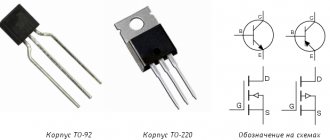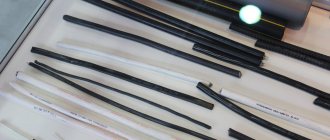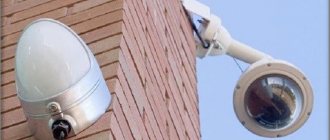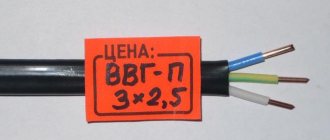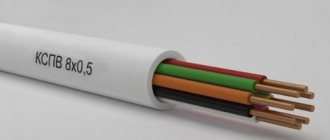Sometimes, while petting a cat, you can see how you create sparks from the cat's fur. Or feel a click if you pick up a knitted item. Such moments happen due to static electricity.
The same phenomenon is scientifically called electrification of bodies. Electricity occurs due to accumulated charges on various objects.
Today we will tell you in detail about electrification, how it appears, and where it is used.
Electrification in physics
Electrification is the process of charge separation in which electrically neutral bodies become charged. It can be described using laws of physics such as Coulomb's law and the law of conservation of charge.
Coulomb's Laws and Charge Conservation
Coulomb's law describes how charges act on each other. The force of their interaction (attraction or repulsion) is directly proportional to the product of their magnitudes and inversely proportional to the square of the distance between them. Opposite charges attract, equal charges repel.
The conservation law states that the algebraic sum of charges is conserved. If, as in the definition of a phenomenon, a positive charge appears on one object, a negative charge of the same magnitude should appear on the other.
Electric charge cannot exist without a carrier. This means that carriers—electrons—accumulate on bodies . A body with an excess of them is charged negatively, and with a deficiency - positively.
The names “negative” and “positive” for charges are arbitrary; the important thing is that they come in two different types.
Properties of static electricity
Not only solids, but also liquids and gases can become electrified. A redistribution of ions occurs in them. Substances of different classes are electrified: dielectrics, semiconductors, insulated conductors.
When electrified objects are separated, the charge on them remains. The further away the bodies are from each other, the greater the potential difference across them will be.
When in contact with neutral or otherwise charged bodies, the charge can relax - flow to another body, so a person in synthetic clothing can be “shocked” if he touches a metal battery or refrigerator. An electrical discharge can also occur through the air from a charged body to an uncharged one located at some distance.
EXAMPLES OF TASKS
Part 1
1. If a massive weight is placed on an insulator plate and connected to an electrometer, and then hit several times with a piece of fur, the weight will acquire a negative charge and the electrometer needle will deflect. In this case, the piece of fur will acquire a charge
1) equal to zero 2) positive, equal in modulus to the charge of the weight 3) negative, equal to the charge of the weight 4) positive, greater in modulus of the charge of the weight
2. Two point charges will attract each other if the charges
1) identical in sign and any modulus 2) identical in sign and necessarily identical in modulus 3) different in sign, but necessarily identical in modulus 4) different in sign and any in modulus
3. The pictures show three pairs of identical light charged balls suspended on silk threads. The charge of one of the balls is indicated in the figures. In what case(s) can the charge of the second ball be negative?
1) only A 2) A and B 3) only B 4) A and B
4. A student, during an experiment to study the interaction of a metal ball suspended on a silk thread with a positively charged plastic ball located on an insulating stand, sketched the observed phenomenon in his notebook: the thread with the ball deviated from the vertical at an angle \( \alpha \). Based on the figure, it can be argued that the metal ball
1) has a positive charge 2) has a negative charge 3) is not charged 4) is either not charged or has a negative charge
5. A negatively charged body repels a light ball of aluminum foil suspended on a thread. Ball charge:
A. positive B. negative B. equal to zero
The following statements are true:
1) only B 2) B and C 3) A and C 4) only B
6. Metal ball 1, mounted on a long insulating handle and having a charge \( +q \), is alternately brought into contact with two similarly isolated uncharged balls 2 and 3, located on insulating stands.
What charge will ball 2 acquire as a result?
1) 0 2) \( \frac{q}{4} \) 3) \( \frac{q}{3} \) 4) \( \frac{q}{2} \)
7. A drop with a charge \( +e \) separated from a drop having an electric charge \( -2e \). What is the electrical charge of the remaining part of the drop?
1) \( -e \) 2) \( -3e \) 3) \( +e \) 4) \( +3e \)
8. A metal plate that had a negative charge of \(-10e\) lost four electrons when illuminated. What was the charge on the plate?
1) \( +6e \) 2) \( +14e \) 3) \( -6e \) 4) \( -14e \)
9. The water drop, which had an electric charge \(+5e\), was joined by a keel with a charge \(-6e\). What will be the charge of the combined drop?
1) \( +e \) 2) \( -e \) 3) \( +11e \) 4) \( -11e \)
10. The figure shows point charged bodies. Body A and B have the same negative charge, and body B has an equal positive charge. What are the magnitude and direction of the resultant force acting on charge B from charges A and B?
1) \( F=F_A+A_B \); direction 2 2) \( F=F_A-A_B \); direction 2 3) \( F=F_A+A_B \); direction 1 4) \( F=F_A-A_B \); direction 1
11. From the list of statements below, select two correct ones and write their numbers in the table.
1) The greater the distance between them, the greater the force of interaction between electric charges. 2) When electrified by friction of two bodies, their total charge is zero. 3) The force of interaction between electric charges is greater, the larger the charges. 4) When two charged bodies are connected, their total charge will be less than the algebraic sum of their charges before the connection. 5) When an ebonite stick rubs against fur, only the ebonite stick acquires a charge.
12. In the process of rubbing against the silk, the glass ruler acquired a positive charge. How did the number of charged particles on the ruler and silk change, provided that no exchange of atoms occurred during friction? Establish a correspondence between physical quantities and their possible changes in this case. Write down the selected numbers in the table under the corresponding letters. The numbers in the answer may be repeated.
PHYSICAL QUANTITY A) number of protons on silk B) number of protons on a glass ruler B) number of electrons on silk
NATURE OF CHANGE 1) increased 2) decreased 3) did not change
How to electrify an object
Static electricity can be created on the surface of the body in different ways:
- interaction with a charged object,
- friction,
- with a sharp change in temperature,
- exposure to ionizing radiation.
When an electrically uncharged body comes into contact with a charged one, the object becomes electrified with the same sign.
When objects made of different types of materials rub, opposite electrical charges arise on their surfaces. The reason for the phenomenon is the difference in forces with which atoms or molecules interact. Briefly, we can say that a substance in which atoms or molecules are bonded to each other more strongly attracts electrons from another, where the particles interact with less force.
Explanation of electrification of bodies. Conductors and their properties.
To explain how the process of electrification of bodies occurs, let us consider the structure of conductors.
Conductors are substances that conduct electrical charge..
Conductors include: metals, solutions of salts and acids, the body of animals and humans, the Earth. In conductors, atoms are arranged in such a way that the electrons, which are located in the last orbit, are weakly held by the nucleus and leave the atom and become free. The existence of free electrons in conductors helps explain the phenomenon of electrification of bodies. Electrons have a negative charge. Let's consider the experiment : take a metal sleeve and hang it on a thread. Let's bring an electrified glass rod with a positive charge to it. Since the sleeve is a conductor and it has many free electrons, they will shift towards the glass rod. As a result, the sleeve and the stick will begin to attract each other.
Examples of the phenomenon
The phenomenon of electrification itself was discovered back in Ancient Greece, when it was noticed that when amber was rubbed with wool, it began to attract dust, threads, and lint . This substance is called “electron” in Greek, hence the name of all phenomena related to electricity.
Glass is positively electrified when rubbing against silk, and ebonite is negatively electrified when rubbing against wool. Everyone knows examples of electrification in everyday life, for example, hair is positively charged when combed with a plastic comb, but the comb itself is negatively electrified. Glass, paper, wool are charged positively, rubber, silicone, plastic are negatively charged.
Static electricity lasts longest on objects if the air is dry. Moist air conducts electricity, and objects quickly cease to be electrified. In the presence of indoor plants or a boiling kettle, which increase humidity, static on clothes and hair appears less frequently.
A well-known example of electrolysis is lightning. This is an electrical discharge that jumps between differently charged clouds or between a cloud and the ground. Charged thunderclouds can cause electrification of various objects on the ground due to the redistribution of charges on them.
The concept of electrification of bodies. Types of electrification
In ancient times, the daughter of the ancient Greek philosopher Thales of Miletus attracted the attention of her father. That light fluffs and lint of fur are attracted to her amber decoration. The philosopher became interested in this phenomenon. And after carrying out various observations, I established it. That other substances also have this property. A glass rod rubbed on silk, an ebonite rod rubbed on cloth or fur. In the seventeenth century, such phenomena were called electrical (from the Greek word electron - amber). If you rub an ebonite stick on dry cloth, then not only the stick, but also the cloth, begins to attract pieces of paper. This means that during friction, both bodies are electrified.
To electrify a body means to impart an electrical charge to the body.
There are several ways to electrify bodies:
1) Friction (Ebonite stick rubbed on fur).
2) Touch (touch the metal sleeve with an electrified glass rod).
3) Influence (bring a charged stick to a stream of water).
Demonstration experiments
You can show the interaction of equally or oppositely charged bodies using ordinary tape. To do this, you need two 12.5 cm strips of adhesive tape.
To demonstrate repulsion, the strips are glued to the table so that a piece 2.5 cm long remains free. These hanging ends are secured to two pencils. If you sharply tear the tape off the table without touching it with your hands, the strips will become equally electrified. Now they need to be separated at some distance and gradually brought closer together. At a certain distance, the repulsion of the strips will be noticeable.
To demonstrate the attraction of oppositely charged bodies, one strip of tape is electrified, as in the previous experiment, and then placed on the table with the sticky side up. Another strip, previously fixed on a pencil, is placed on the first one and then torn off. Then the strips will be charged oppositely. As in the previous experiment, at a certain distance you can notice the attraction of the stripes.
Process danger
The charge on an electrified object can be quite large, and the voltage can reach tens of kilovolts, but due to the very small current values, it is not dangerous for humans .
However, such small discharges can have a negative impact on precision electronics, such as microprocessors, so when working with electronic components: during their production, repair or use, special attention is paid to preventing electronization.
Under some conditions, relaxation of a large accumulated charge can lead to combustion. Airplanes are electrified in flight, so a discharge can occur when the ramp is brought up. To avoid this, static electricity is removed from the aircraft by discharging it into the ground. For the same reason, fuel tankers are always equipped with a chain in contact with the ground. This prevents fuel fires.
Practical use
The accumulation of static electricity on objects can be dangerous, but there are also positive aspects to this phenomenon . Electrification of bodies is used in practice in various fields:
- Electrostatic filters for purifying air from contaminants, mainly dust, are used in everyday life and in industry.
- Electrostatic painting of surfaces, for example cars. The electrified paint particles are attracted to the surface being painted, resulting in less paint being wasted.
- Production of artificial fur. The finished pile is passed through a mesh, it acquires a charge and falls perpendicular to the glue-coated base.
- Smoking food using electrostatics.
This phenomenon is also used for sorting, filtering, and purification. Electrostatics is also used in medicine.
Electrification is associated with the occurrence of an excess or deficiency of electrons on the surface or inside objects. They can be created in different ways, for example, by friction or touching a charged object. Electrification has practical uses, but can be dangerous in some cases.
Application in practice
- air purification using electrostatic filters;
- electrostatic painting of metal surfaces;
- production of synthetic fur by attracting electrified pile to a fabric base, etc.
Harmful effects:
- the effect of static discharges on sensitive electronic products;
- ignition of fuel vapors from static electricity discharges.
Methods of combating: grounding fuel containers, working in antistatic clothing, grounding tools, etc.
